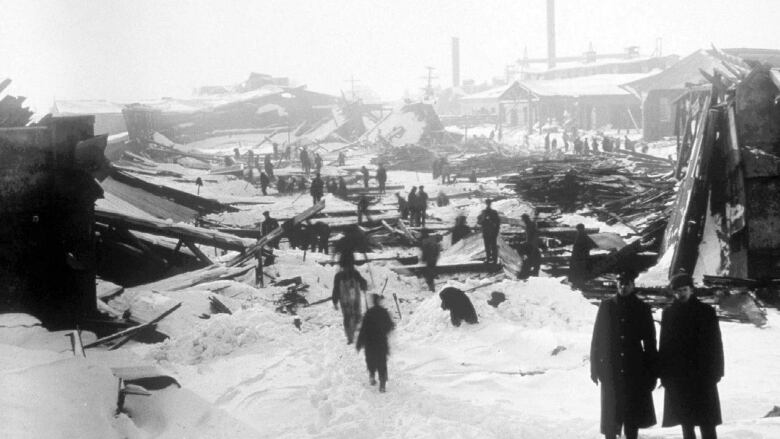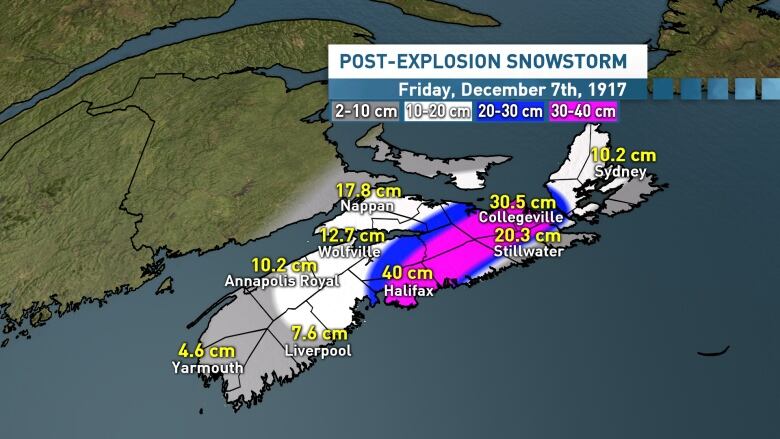Why a nasty snowstorm following the Halifax Explosion came as a surprise
Chilly temperatures and lots of snow complicated relief efforts

Surviving winter's worst in the Maritimescan be a challenge in the best of times, but being left homeless, blind,in chaos and blanketed by 40 centimetres of snowafter the worst pre-nuclear explosion is somewhat unthinkable.
Shortly after 9 a.m. on Dec.6,1917, on a calm morning in the wartime port city of Halifax, an unprecedented explosion shocked the region. The blast almost instantaneously destroyed hundreds of homes, killed nearly 2,000 people and injuredabout 9,000 others in the Halifax area.
To make matters worse,a storm following the explosion was already in the works and nobody knew about it.

On the morning of the disaster, an area of low pressure crossed northern Florida, moving from the Gulf of Mexico into the southwestern Atlantic ocean. As it moved northward, the perfect conditions for a nor'easterdeveloped which was exactly what happened.
But 100 years ago, there were no satellites, so meteorologyrelied almost solely on ground observations.The problem was the great post-explosion storm of 1917 tracked far enough away from the heavily populated Eastern Seaboard that there was little warning for Nova Scotia.
On the morning of Dec.7, snow began to fall onthe ruins of Halifax.
By the afternoon, temperatures dropped to 4 C as the winds intensified from the northwest to 55 km/h, with gusts over 90 km/h, producing windchills of 15 C. A combination of blowing and drifting snow gave blizzard-like conditions, and by theend of day, 40 centimetresof snow had fallen over the city.
Although relief efforts had already gotten underway the day before, thousands were still injured and homeless, trapped under rubble. To complicate things, the jammed relief trains from Boston and Eastern Canada were delayed by snow-covered train tracks near the Nova Scotia-New Brunswick border.
Luckily, as is still the case today, storms bring communities together, so even though the post-explosion storm of 1917 was nature's best attempt at kicking a city when it was already down, Halifax pulled together and got right back up.













_(720p).jpg)


 OFFICIAL HD MUSIC VIDEO.jpg)
.jpg)



























































































